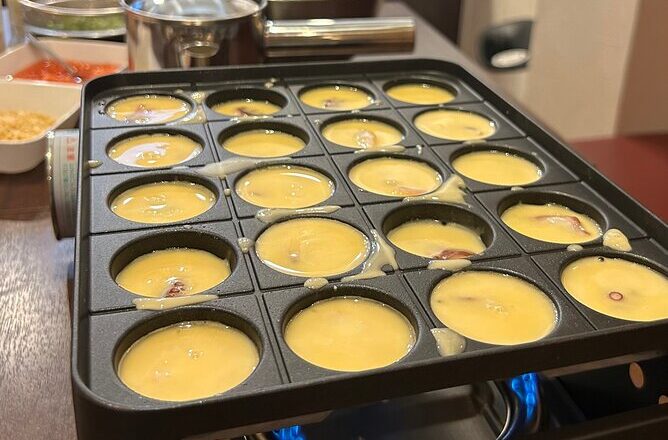Takoyaki is a popular Japanese snack that has won hearts worldwide. This small, round delicacy is made from a batter filled with bits of octopus and cooked to perfection in a unique pan. Understanding The History of Takoyaki and the Evolution of Its Pan gives us a deeper appreciation of both Japanese cuisine and the innovative culinary tools that accompany it.
To truly appreciate the art of making Takoyaki, we must dive into its rich history and how its specific cooking pan has evolved over time.

The Origins of Takoyaki: A Journey Through Time
Takoyakis story begins in the city of Osaka in the early 1930s. Created by a street vendor named Tomekichi Endo, this snack quickly became a local favorite. Drawing inspiration from similar snacks and regional dishes, Endo perfected the art of wrapping diced octopus in dough, cooking it in a specialized pan.
Influences and Inspirations
The invention of Takoyaki was influenced by the Akashiyaki, a dish from Akashi in the Hyogo Prefecture. Akashiyaki is also an octopus-filled treat but is softer, being dipped in broth for consumption. The takoyaki pan, however, was key in providing a crispy exterior to the soft Takoyaki inside.
The Rise in Popularity
As Osaka’s street food culture boomed, Takoyaki gained immense popularity. It soon spread to other regions of Japan and later, internationally, becoming a beloved staple in Japanese cuisine that is enjoyed both locally and globally.
The Fascinating Evolution of the Takoyaki Pan
Takoyaki requires a distinctive pan that beautifully complements its cooking process. These pans have distinctive hemispherical molds that give Takoyaki its iconic shape. Over time, Takoyaki pans have evolved in design and material, adapting to modern needs and technologies.
Early Pan Designs
Initially, Takoyaki pans were handmade out of heavy iron, suitable for the high heat required for ideal crispy texture creation. However, as times changed, innovations led to more user-friendly models.
Modern Adaptations
Today, Takoyaki pans are available in various materials such as stainless steel and cast iron. Electric Takoyaki makers have become popular too, providing convenience without compromising on quality.
Culinary Techniques and Innovations
The art of making Takoyaki extends beyond just the ingredients and the pan. Culinary skills, techniques, and innovations all play a role in perfecting these delightful Japanese snacks.
Mastering the Takoyaki Flip
The iconic technique of flipping the takoyaki is a skill mastered with practice. Using skewers, each ball is continuously rotated during the cooking process, ensuring a uniform cook and round shape.
Embracing New Flavors
Modern versions of Takoyaki incorporate different fillings, such as cheese or even chocolate, providing a fresh take on the classic dish. Adaptability continues to make Takoyaki popular among diverse culinary audiences.

Frequently Asked Questions
Why is Takoyaki traditionally made with octopus?
Octopus was readily available and affordable in Japan, making it a popular ingredient in many traditional dishes, not just Takoyaki.
What materials are best for Takoyaki pans?
While cast iron is traditional and offers excellent heat distribution, modern options like non-stick stainless steel combine ease of use with cooking quality.
Can other ingredients be used in Takoyaki?
Yes, novel ingredients such as cheese and chocolate have successfully been used, making Takoyaki versatile while keeping the essence of its flavors.
The fascinating history of Takoyaki and the evolution of its pan offer insights into Japanese culinary innovation. Just as Takoyaki adapts with time, its enduring appeal lies in its delicate balance of tradition and modernity. For more on how cooking tools have evolved, you might want to check comparative analyses of grill brands. Continuing to fuse tradition with innovation ensures Takoyaki remains a cherished dish enjoyed in diverse kitchens worldwide.
This article contains affiliate links. We may earn a commission at no extra cost to you.

